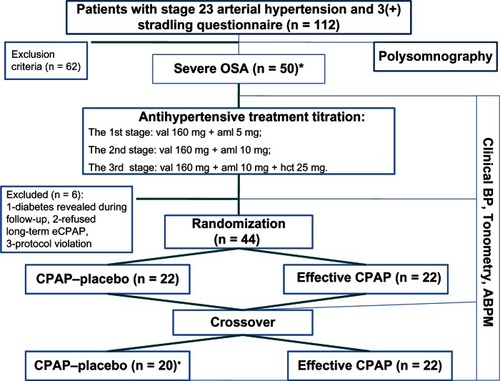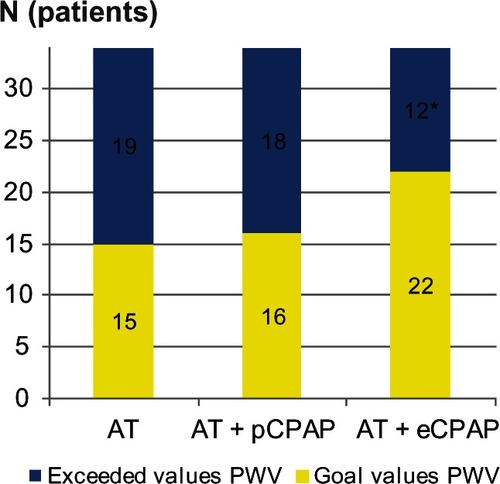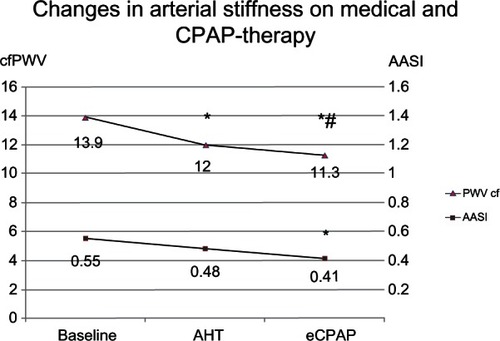Figures & data
Figure 1 Study design.
Abbreviations: ABPM, ambulatory blood pressure monitoring; BP, blood pressure; val, valsartan; aml, amlodipine; HCT, hydrochlorothiazide; CPAP, continuous positive airways pressure; eCPAP, effective CPAP; pCPAP, placebo CPAP; OSA, obstructive sleep apnea.

Table 1 Main characteristics of the population
Table 2 Blood pressure values according to treatment regimen
Figure 2 Pulse wave velocity recordings (normal < 12 m/sec).
Abbreviations: AT, antihypertensive therapy; CPAP, continuous positive airways pressure; eCPAP, effective CPAP; pCPAP, placebo CPAP; PWV, pulse wave velocity.

Figure 3 Changes in carotid-femoral PWV and AASI after antihypertensive therapy and CPAP therapy.
Abbreviations: AHT, antihypertensive therapy; eCPAP, effective continuous positive airways pressure; cfPWV, carotid-femoral pulse wave velocity; AASI, ambulatory arterial stiffness index.
